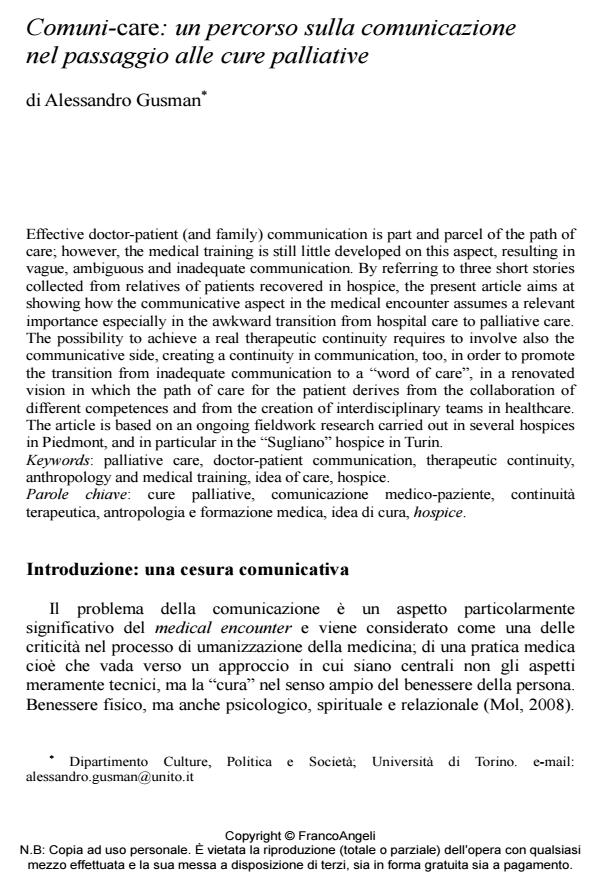Comuni-care: un percorso sulla comunicazione nel passaggio alle cure palliative
Journal title SALUTE E SOCIETÀ
Author/s Alessandro Gusman
Publishing Year 2015 Issue 2015/3
Language Italian Pages 14 P. 159-172 File size 268 KB
DOI 10.3280/SES2015-003013
DOI is like a bar code for intellectual property: to have more infomation
click here
Below, you can see the article first page
If you want to buy this article in PDF format, you can do it, following the instructions to buy download credits

FrancoAngeli is member of Publishers International Linking Association, Inc (PILA), a not-for-profit association which run the CrossRef service enabling links to and from online scholarly content.
Effective doctor-patient (and family) communication is part and parcel of the path of care; however, the medical training is still little developed on this aspect, resulting in vague, ambiguous and inadequate communication. By referring to three short stories collected from relatives of patients recovered in hospice, the present article aims at showing how the communicative aspect in the medical encounter assumes a relevant importance especially in the awkward transition from hospital care to palliative care. The possibility to achieve a real therapeutic continuity requires to involve also the communicative side, creating a continuity in communication, too, in order to promote the transition from inadequate communication to a "word of care", in a renovated vision in which the path of care for the patient derives from the collaboration of different competences and from the creation of interdisciplinary teams in healthcare. The article is based on an ongoing fieldwork research carried out in several hospices in Piedmont, and in particular in the "Sugliano" hospice in Turin.
Keywords: Palliative care, doctor-patient communication, therapeutic continuity, anthropology and medical training, idea of care, hospice.
- La famille face à la maladie en phase terminale. Ethnographie dans une maison de soins palliatifs au Piémont (Italie) Alessandro Gusman, in Anthropologie et Santé /2016
DOI: 10.4000/anthropologiesante.2019
Alessandro Gusman, Comuni-care: un percorso sulla comunicazione nel passaggio alle cure palliative in "SALUTE E SOCIETÀ" 3/2015, pp 159-172, DOI: 10.3280/SES2015-003013